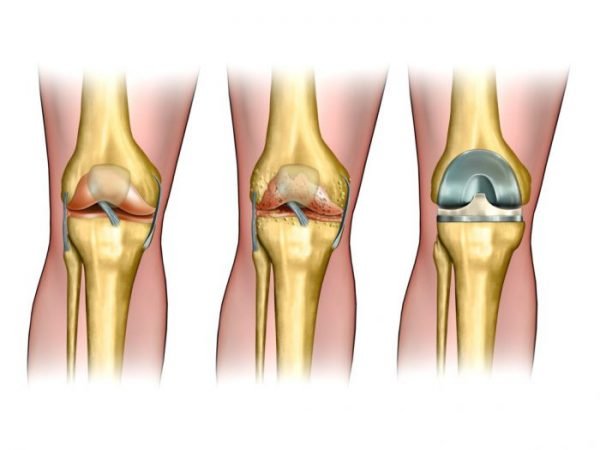ABOUT HIP REPLACEMENT
A hip replacement is a surgical procedure to replace the surfaces of the hip joint with a prosthetic implant.
Hip replacement surgery is a common surgery for patients who are suffering with osteoarthritis, a condition that causes pain and swelling in the joints and reduces joint mobility.
Undergoing hip replacement surgery can relieve pain, improve the function of the joints and can improve walking for patients who have pain and difficulty with such movement.
With a total hip replacement surgery, metal, plastic or ceramic materials are used to replace the ball and socket joints. The damaged cartilage is then removed and replaced with new material to support the joints. The joints can then be attached by either cementing the joint to the bone, or by using a coating to attach the bone and joints, which will allow the bone to grow and form an attachment to the joint.
When getting hip replacement surgery, patients should discuss the model of prosthetic hip that will be used. Prosthetic hips have improved a lot in recent years, and it makes sense for surgeons to use a very modern device.
Recommended for
- Joint failure caused by osteoarthritis
- Rheumatoid arthritis
- Avascular necrosis
- Traumatic arthritis
- Protrusio acetabuli
- Hip fractures
- Bone tumors
TIME REQUIREMENTS
- Number of days in hospital: 3 – 5 days.
- Average length of stay abroad: 1 – 3 weeks.
After surgery on the lower limb, patients have an increased risk of deep vein thrombosis. Any travel plans must be discussed with the surgeon first.

COMPARE HIP REPLACEMENT PRICES AROUND THE WORLD
| Country | Cost |
|---|---|
| Spain | 12350€ |
| Thailand | 7412€ |
| India | 7249€ |
| Poland | 5851€ |
| Mexico | 4723€ |
| Tunisia | 4200€ |
| Morocco | 2166€ |
HOW TO FIND QUALITY TREATMENT ABROAD
BEFORE HIP REPLACEMENT ABROAD
A hip replacement is a serious surgery, and as such patients should explore all of their treatment options with their doctor ahead of the procedure.
In deciding to pursue a hip replacement, the doctor will conduct a physical examination of the hip, and take X-rays and blood tests. In the days prior to the procedure, the doctor may prescribe antibiotics to the patient, in order to reduce the risk of infection. The patient may also be advised to abstain from smoking and from taking certain medications such as aspirin.
Patients with complex conditions may benefit from seeking a second opinion before beginning a treatment plan. A second opinion means that another doctor, usually an expert with a lot of experience, will review the patient’s medical history, symptoms, scans, test results, and other important information, in order to provide a diagnosis and treatment plan. When asked, 45% of US residents who received a second opinion said that they had a different diagnosis, prognosis, or treatment plan.
HOW IS IT PERFORMED
The damaged femoral head part of the hip is removed and replaced with a metal stem. The femoral stem is cemented into place or otherwise secured. A metal, ceramic or plastic ball is placed on the upper part of the stem, replacing the femoral head.
The damaged cartilage surface of the socket is removed and replaced with a metal, ceramic or plastic socket part. Screws or cement are sometimes used to hold the socket in place. A spacer is placed between the new ball part and the socket to allow for a smooth gliding surface for the hip joint.
Traditionally hip replacement surgery is performed as open surgery, however, there are new techniques which some doctors may use to perform a more minimally invasive surgery. Minimally invasive surgery involves making smaller incisions, in order to reduce bleeding and scarring. However, sometimes the hip cannot be replaced with such small incisions, which is why open surgery is generally more used.
Materials
Prosthetic hips are made of plastic, metal, ceramic or a combination of materials. Sometimes cement is used to fix the implant into place.
Anesthesia
General anesthetic.
Procedure duration
The Hip Replacement takes 1 to 3 hours.

WHAT TO EXPECT AFTER HIP REPLACEMENT
Post procedure care
After the procedure, some patients will be able to walk a little bit the same day, and this is encouraged. The new hip is usually painful at first, and it is normal to spend 3 to 5 days in hospital. Often the patient will be able to walk without crutches after 4 to 6 weeks, and be recovered after 3 months. Healing and recovery time may vary according to the patient’s age and health.
Possible discomfort
This is a serious surgical procedure, and pain management and physical therapy should begin as soon as the patient feels up to it.
IMPORTANT THINGS TO KNOW ABOUT HIP REPLACEMENT
Not recommended for
- Patients with morbid obesity
Potential risks
- Dislocation
- Loosening
- Infection
- Deep vein thrombosis
- Pulmonary embolism
- Periprosthetic fractures
- Osteolysis (bone loss)
- Metal sensitivity
- Metal toxicity
- Nerve palsy
- Chronic pain
FREQUENTLY ASKED QUESTIONS
Hip implant devices fall into one of 4 categories: metal on plastic, metal on metal, ceramic on plastic, or ceramic on ceramic. The categories refer to the materials used in the bearings, or the ball and socket of the implant which articulate the joint. There is no consensus as to what materials are best and the choice usually comes down to the surgeon’s preference.
Metal on metal implants are now less commonly used, since it was discovered that friction and wear caused by rubbing released metal ions into the bloodstream.
Hip implant devices are expected to last between 15 and 20 years, but most often they last much longer. Factors that affect the lifespan of the implant include the general health of the patient, their ability to exercise, and their ability to maintain a healthy weight.
During the procedure, you will be given either general anesthesia or a spinal block. Under general anesthesia, you will be asleep during the procedure and will feel no pain. With a spinal block, the lower half of your body will be completely numb but you will be otherwise awake and alert throughout the procedure. During recovery, there will be pain and your doctor will be able to assist with pain management. How much pain there is and how long it lasts varies from patient to patient and also depends on the amount of physical therapy involved in your recovery.
Hip replacement surgery is usually necessary because of the progression of diseases such as osteoarthritis, rheumatoid arthritis, and osteonecrosis. These diseases damage the joint and degrade the cartilage, causing the bones to grind against each other and wear down. This results in pain and loss of mobility.
Risks associated with hip replacement surgery are similar to other surgeries and include blood clots, infection, bone fractures, and dislocation of the hip joint. After surgery, you will be advised of ways to avoid dislocating the new joint. Occasionally, the procedure causes one leg to be longer than the other, although surgeons usually avoid this complication.















